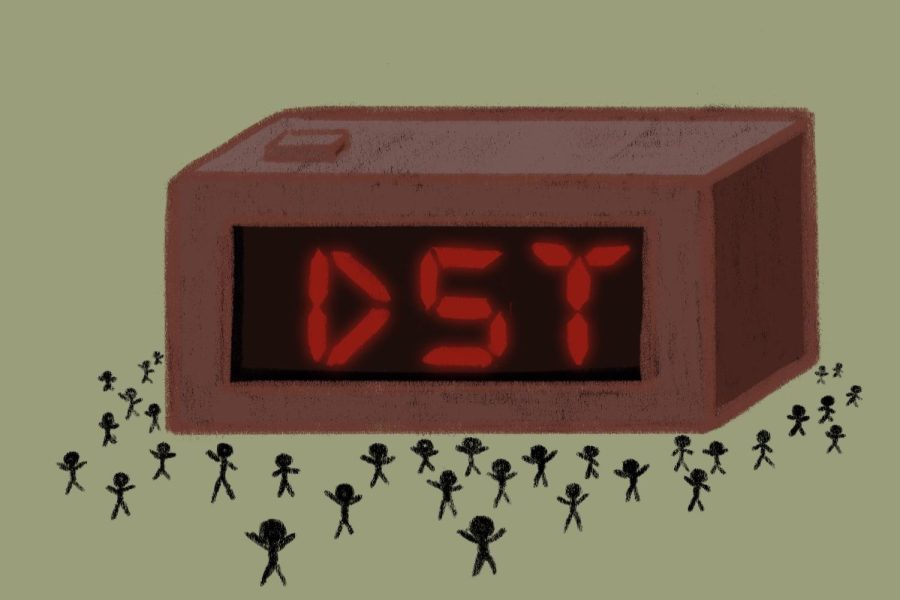Saving daylight savings
Introduced to the Senate just before “spring forward”, the “Sunshine Protection Act” offers America a way out from the struggle of losing an hour each spring. After passing the Senate with a unanimous vote, the bill has stalled in the House, caught between those wishing for sunnier evenings and those hesitant to lengthen winter morning darkness.
March 23, 2022
Saving daylight savings
Uniting both Democrats and Republicans in their distaste for daylight savings, the Senate unanimously passed the “Sunshine Protection Act” on Wednesday, March 16. The bill, proposed by Republican senator Marco Rubio of Florida, would become effective in November of 2023. If passed, the bill will set the national time an hour forward permanently. The House of Representatives still needs to vote on the bill before it goes; however, national attention on the Russian-Ukrainian War will likely delay a decision. Despite this, optimism runs high among those waiting for results.
“I would think if it went through the Senate that easily then it’ll make it through the House. And then as far as the president, I mean, of all the things going on right now, it’s probably the least controversial thing,” AP Government and AP Microeconomics teacher Steven Butler said.
Besides eradicating the obvious downside of setting back clocks, the act offers significant benefits. The shifted hours of daylight will likely decrease the number of vehicle collisions involving pedestrians and wildlife by improving visibility and transferring heavy traffic times away from when wildlife roam the roads the most. Proponents of the bill also cited sources asserting that permanently living in daylight savings time promotes healthy physical activity in adults and children as well as reducing the risk of cardiac issues and other serious health problems.
“There’s a common thing, circadian rhythm. Whenever it’s messed up, it can actually cause a lot of people to have heart attacks or really mess up their day by day [functioning], stuff like that. I find it [the bill’s passing in the Senate] great news,” senior Lorenzo Alarcon said.
Citing a 2015 Brookings Institution study, the bill even said that it could decrease the occurrence of robberies by 27% as it increased the number of daylight hours in the evening. Arguably most relevant in these times, benefits to the economy come as part of the bill’s promised advantages.
Credited separately to New Zealand scientist George Vernon Hudson and British builder William Willett, daylight savings time has manifested itself throughout the world since first implemented by Germany in 1916. The idea of year-round daylight savings time has enjoyed America’s spotlight before: Instituted as America faced a national gas shortage, Nixon’s “Emergency Daylight Saving Time Energy Conservation Act of 1973” lasted only ten months due to social pressure.
As the modern bill gains traction, concerns reappear surrounding how permanent daylight savings in the 70s impacted winter mornings. By shifting back the sunrise, the change left school children waiting for the bus in what looked like the middle of the night. House members have also raised questions about the validity of claims that permanent daylight savings will provide health benefits, leading to a slowdown in the bill’s process.
Despite these valid objections, the bill’s trajectory still appears to head straight for President Joe Biden’s desk, although the House’s actions may delay it significantly.







